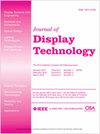Experimental investigation of facial expressions associated with visual discomfort: Feasibility study toward an objective measurement of visual discomfort based on facial expression
Q Engineering
引用次数: 5
Abstract
This paper aims to investigate facial expressions associated with visual discomfort induced by excessive screen disparities of stereoscopic three-dimensional (S3D) contents. For this purpose, we constructed a novel facial expression database regarding the visual discomfort. While viewing the realistic stereoscopic stimuli with screen disparities varying from 0° to 4.66°, each viewer's face was captured. The database consisted of face videos and associated comfort scores obtained by self-reporting, which might be only a publicly available database regarding the facial expressions associated with visual discomfort. Using the database, for the quantitative investigation, the facial expressions associated with visual discomfort were compared with basic emotional expressions that were well defined and universal. As a result, we observed that the emotional expression of “stressed” (i.e., anger or disgust) was highly correlated with the perceived visual discomfort (Pearson correlation coefficient: 0.91). Furthermore, the feasibility of the discomfort measurement using facial expressions obtained while viewing S3D contents was verified. Experimental results showed that the discomfort measurement using facial expression recognition could achieve a feasible performance (classification accuracy of 81.42%).与视觉不适相关的面部表情的实验研究:基于面部表情客观测量视觉不适的可行性研究
本文旨在研究与立体三维(S3D)内容的过度屏幕差异引起的视觉不适相关的面部表情。为此,我们构建了一个新的关于视觉不适的面部表情数据库。在观看屏幕差异从0°到4.66°不等的逼真立体刺激时,每个观看者的面部都被捕捉到。该数据库由面部视频和通过自我报告获得的相关舒适度得分组成,这可能只是一个关于与视觉不适相关的面部表情的公开数据库。使用该数据库进行定量调查,将与视觉不适相关的面部表情与定义明确且普遍的基本情绪表达进行比较。因此,我们观察到“压力”(即愤怒或厌恶)的情绪表达与感知到的视觉不适高度相关(Pearson相关系数:0.91)。此外,验证了使用观看S3D内容时获得的面部表情测量不适的可行性。实验结果表明,使用面部表情识别的不适感测量可以达到可行的性能(分类准确率为81.42%)。
本文章由计算机程序翻译,如有差异,请以英文原文为准。
求助全文
约1分钟内获得全文
求助全文
来源期刊

Journal of Display Technology
工程技术-工程:电子与电气
CiteScore
1.50
自引率
0.00%
发文量
0
审稿时长
2.8 months
期刊介绍:
This publication covers the theory, material, design, fabrication, manufacturing and application of information displays and aspects of display technology that emphasize the progress in device engineering, design and simulation, materials, electronics, physics, and reliability aspects of displays and the application of displays. The Journal is sponsored by EDS, seven other IEEE societies (BT, CES, CPMT, IA, IM, PHO and SSC) and the Optical Society of America (OSA).
 求助内容:
求助内容: 应助结果提醒方式:
应助结果提醒方式:


